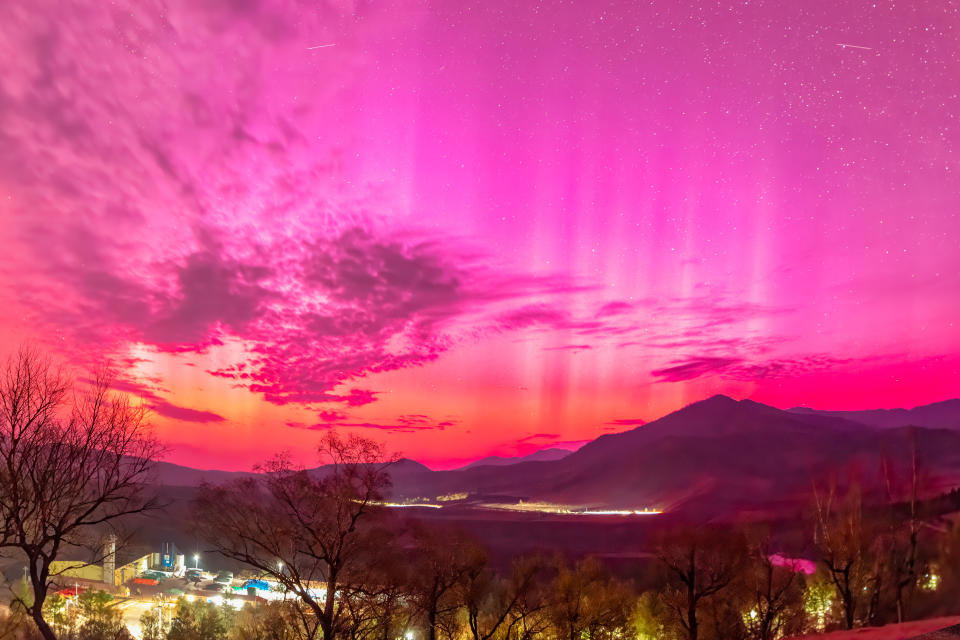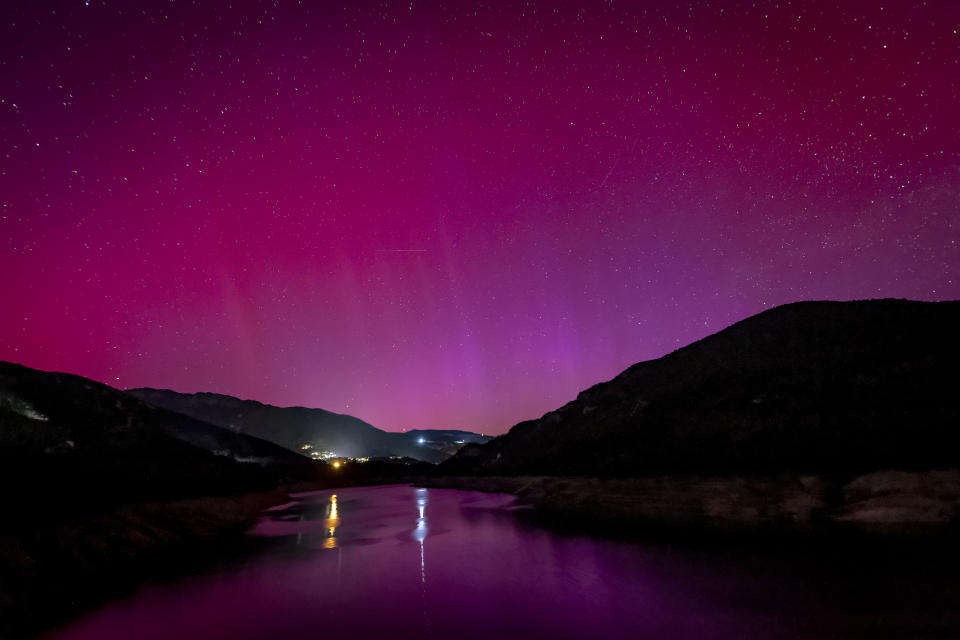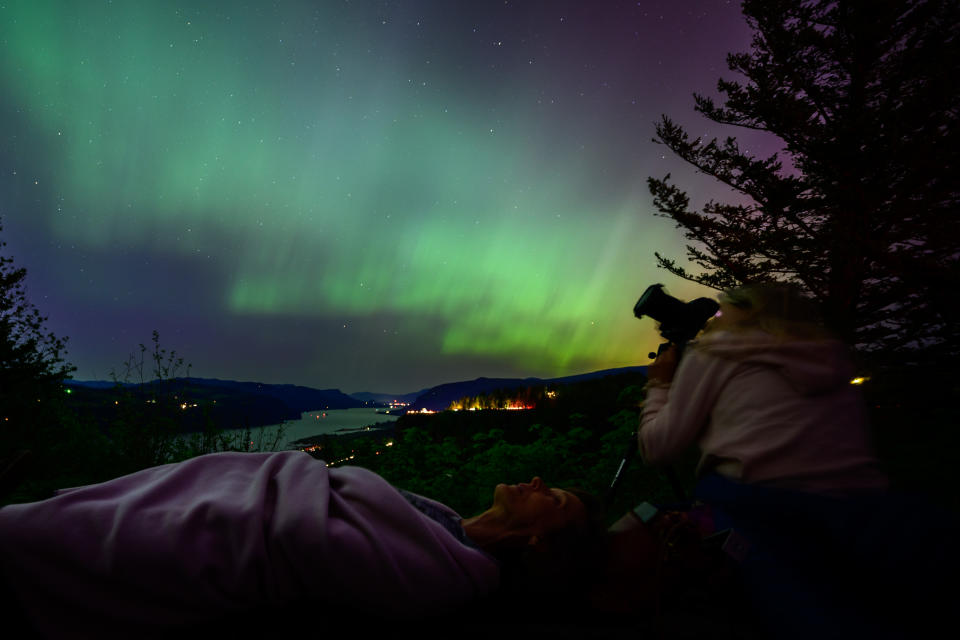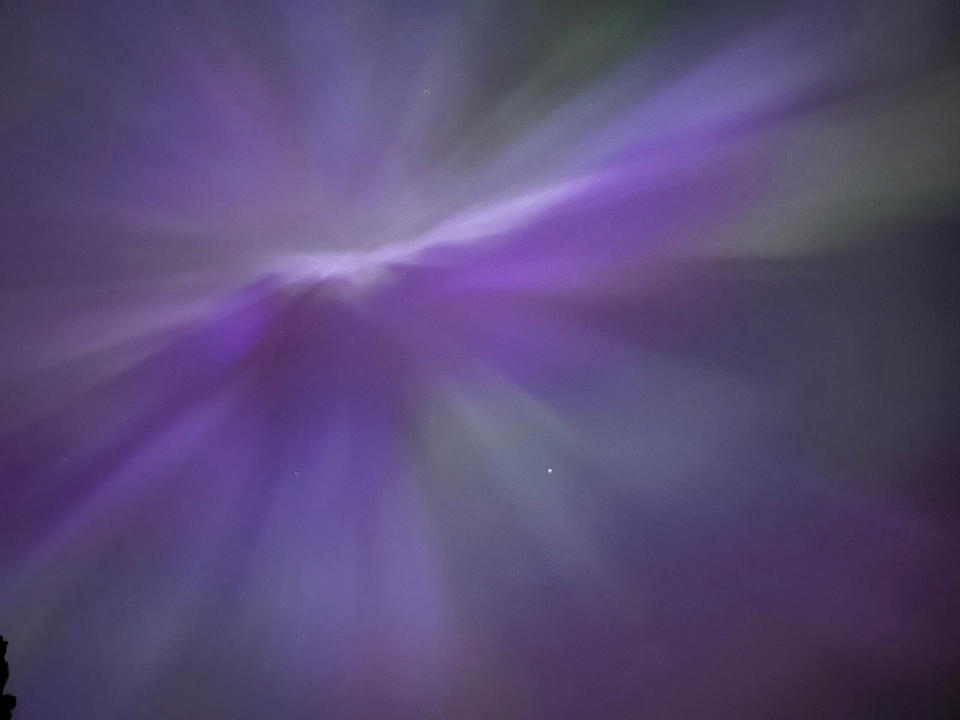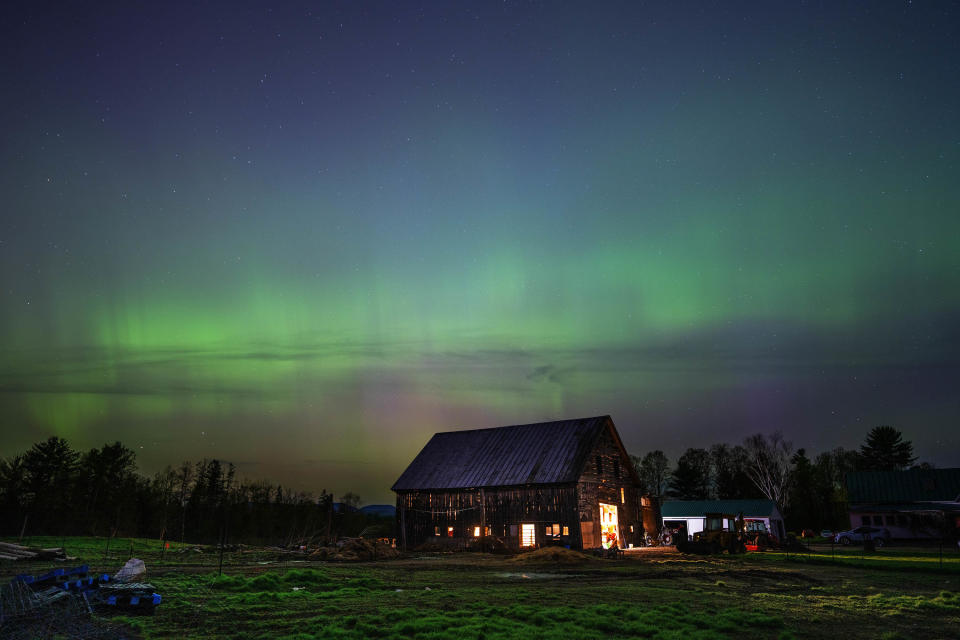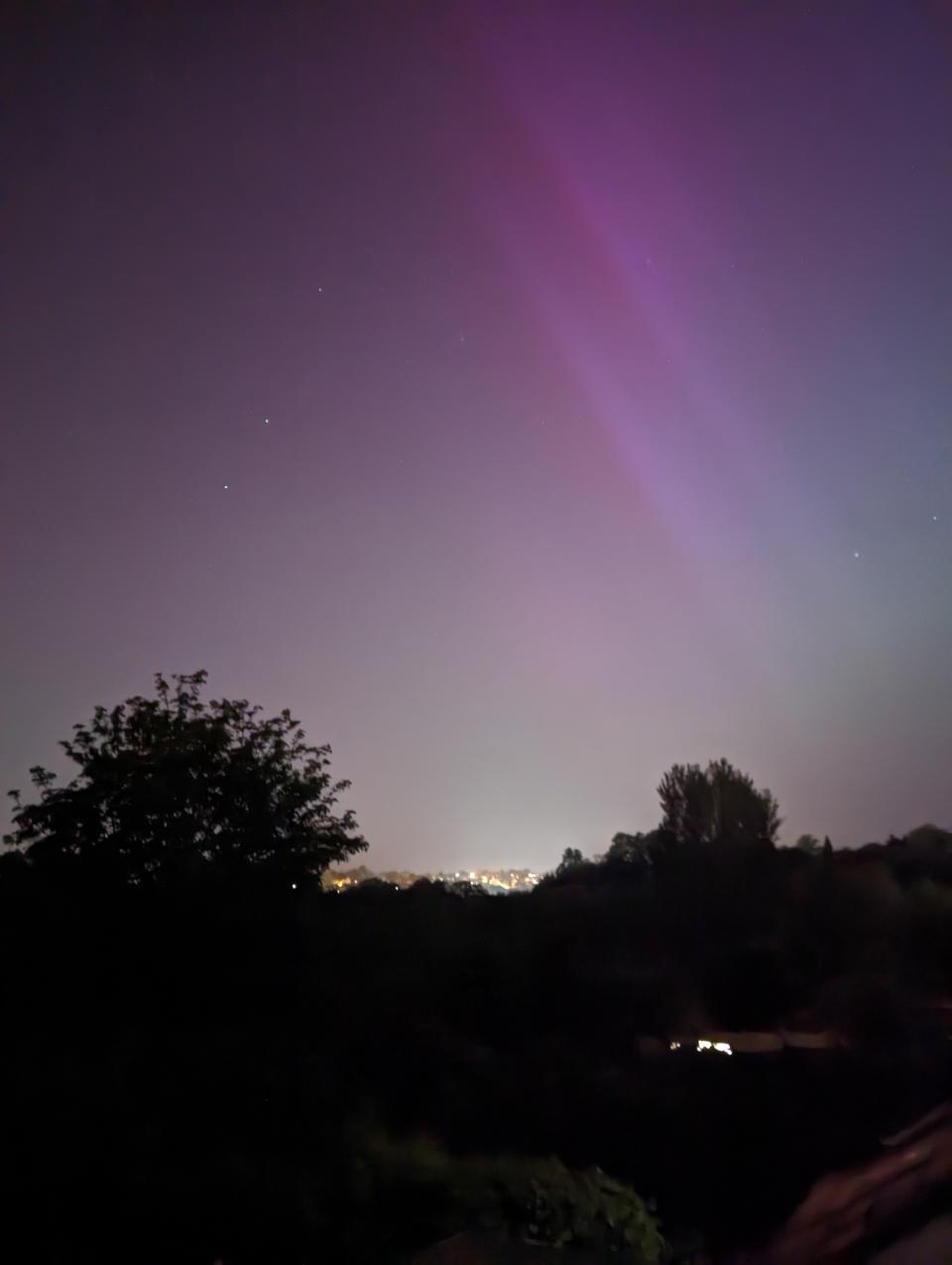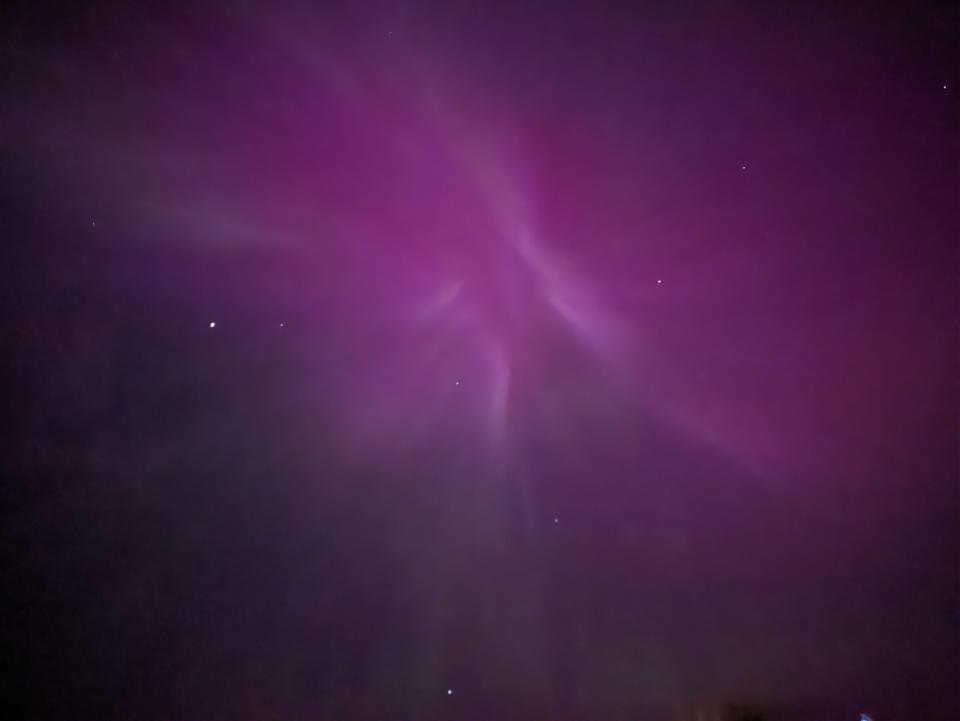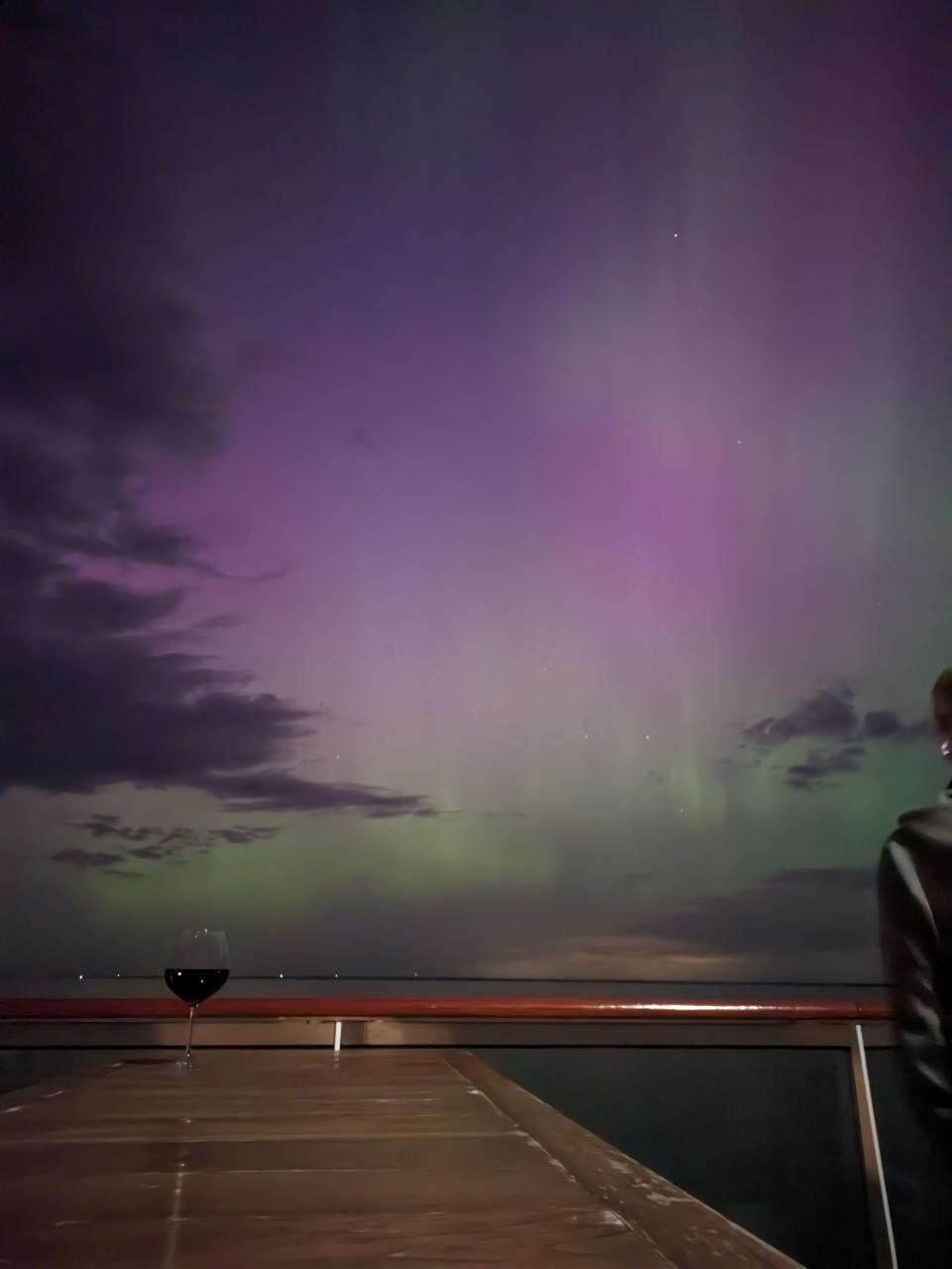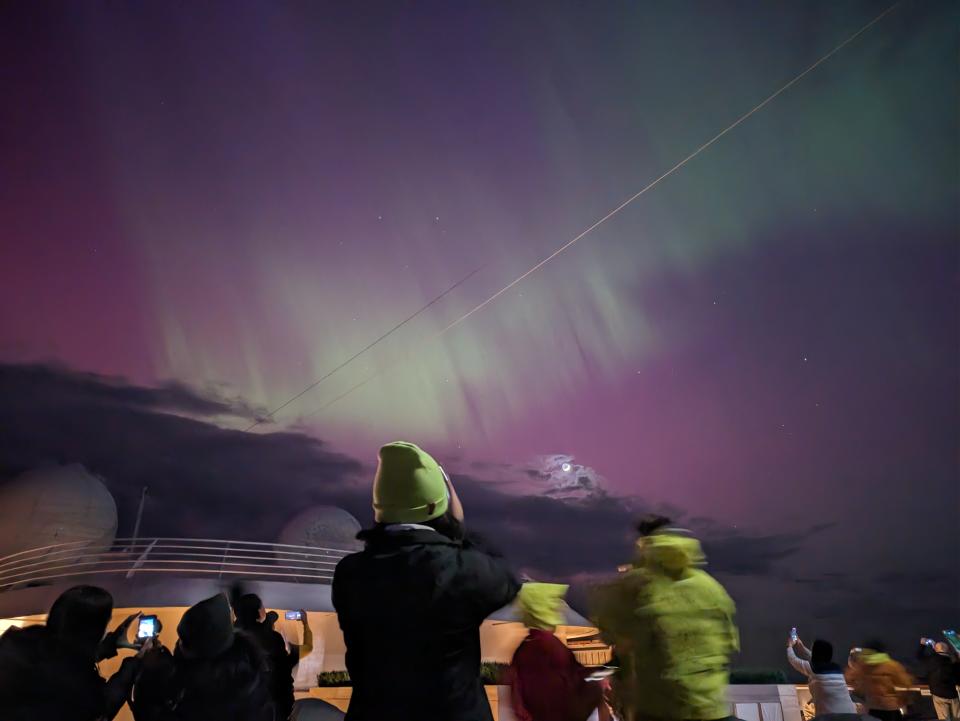Aurora photos: Stunning northern lights glisten after biggest geomagnetic storm in 21 years
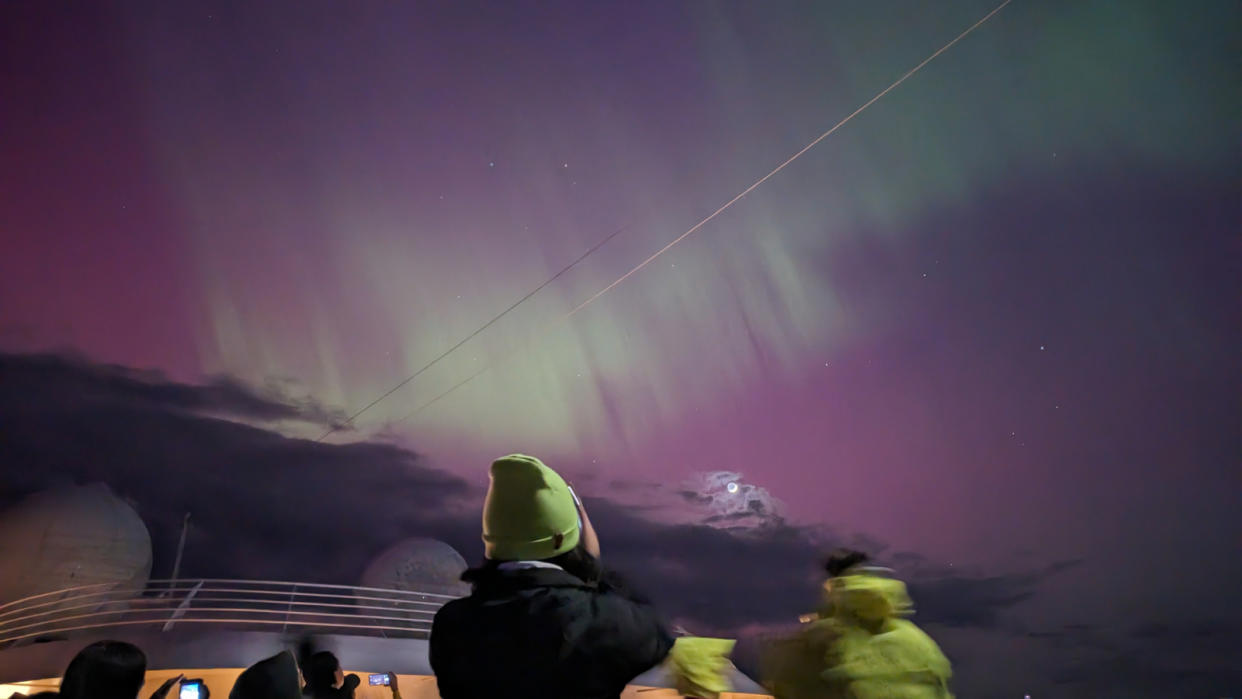
Spectacular images have captured the moment stunning aurora displays lit up the night sky during the strongest geomagnetic storm in 21 years, which hit Earth over the weekend. The phenomenon occurred after several large solar storms crashed into our planet's atmosphere, producing green and blue hues in skies across the Northern Hemisphere as far south as Florida.
The last time auroras were seen this far south was October 2003, when an extreme G5 storm — the highest category for geomagnetic storms — smashed into Earth.
Live Science editors were able to capture the event. Hannah Osborne, planet Earth and animals editor, was on the Viking Cruise ship Octantis on Lake Erie reporting on the work on-board scientists are doing to assess the health of the Great Lakes, when the solar storm hit.
"It was an incredible experience," she said. "Staff on board were buzzing, saying they'd never seen anything like it before. They turned off all the lights and the whole sky just lit up and turned pink and green. There were streaks everywhere you looked."
On the other side of the planet, editor-in-chief Alexander McNamara saw the celestial light show from southwest England, an area of the country unused to such a spectacle.
This weekend's geomagnetic storm, which also temporarily reached G5 levels, began at around midday ET on Friday and persisted until the early hours of Monday (May 13).
"This is an unusual and potentially historic event," Clinton Wallace, director of the National Oceanic and Atmospheric (NOAA) Space Weather Prediction Center, said in a statement.
The immense geomagnetic storm originated from an enormous sunspot called AR3664, which is more than 15 times wider than Earth. Last week, it unleashed a flurry of solar flares, including at least five that launched coronal mass ejections (CMEs), or clouds or plasma and radiation at our planet. These clouds then smashed into the magnetic field around Earth, temporarily weakening our protective shield and enabling charged particles to excite gases in the atmosphere, which created the stunning light shows witnessed this weekend.
The colors produced in an aurora depend on which gases are excited by the particles from the sun and how much energy is exchanged between them. Oxygen is responsible for the green and red hues seen during the recent geomagnetic storm, while pink hues were caused by either oxygen or nitrogen.
After the initial storm, the sun continued to spit out solar flares, including more X-class flares — the strongest the sun is capable of producing. Some of these flares also launched CMEs but they were not directed toward Earth. The gigantic sunspot is now facing away from our planet and is unlikely to bombard us any further.
Photos from this exceptional event can be seen below.
